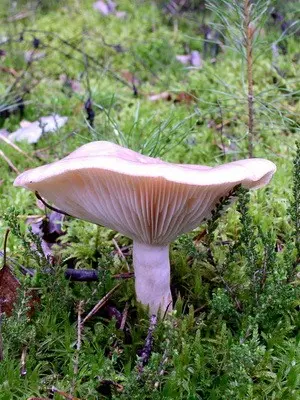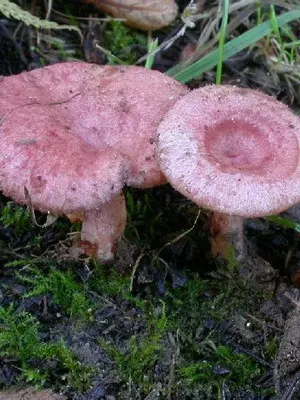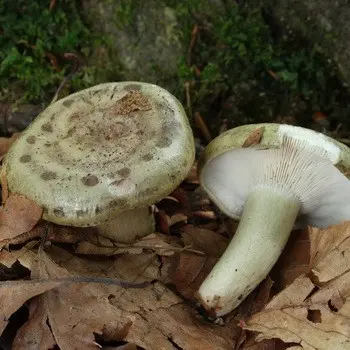 Inedible lactifers (mushrooms) can be found in wet forests of mixed and deciduous types. Basically, these mushrooms grow near birches, but some species are also found in mountainous areas.
Inedible lactifers (mushrooms) can be found in wet forests of mixed and deciduous types. Basically, these mushrooms grow near birches, but some species are also found in mountainous areas.
Below you can get acquainted with the description of inedible milkers of three types: prickly, sticky and liver. Also, your attention will be offered photographs of these mushrooms and the names of their counterparts.
Milky (breast) prickly (Lactarius spinosulus)
Category: inedible.
Spiny milkweed cap (Lactarius spinosulus) (diameter 3-8 cm): pinkish to reddish brown, may have small red scales. Usually either slightly convex or almost prostrate, sometimes becoming depressed with time. The edges are uneven and wavy.
Leg (height 4-8 cm): usually curved and hollow. One color with a hat, noticeably darkens at the place of pressure or cut.
Pulp: ocher or white, in old mushrooms it can be greenish. Almost no smell, but the taste is very sharp.
Records: yellow in color, firmly adhere to the leg.
Doubles: pink wave (Lactarius torminosus), however, it has a smaller size and extremely brittle flesh.
When growing: from the beginning of August to the end of September in the countries of the Eurasian continent with a temperate climate.


Where can I find: in moist forests of mixed and deciduous type. Prefers neighborhood with birches.
Eating: not used.
Application in traditional medicine: does not apply.
[ »wp-content/plugins/include-me/ya1-h2.php»]
Mushroom milky sticky
 Category: inedible.
Category: inedible.
Sticky lactic cap (Lactarius blennius) (diameter 4-11 cm): gray-green, often with dark concentrated zones. The edges are lighter than the center. In a young mushroom, the cap is slightly convex, flattens with time and even becomes slightly concave.
Leg (height 4-8 cm): slightly lighter than the cap, sticky to the touch.
Records: thin and frequent, white.
Pulp: white, brittle, without a pronounced smell, but with a strong peppery taste. The thick milky juice of the milky mushroom sticky in the sun changes color to green or olive.
Doubles: zone milky (Lactarius circellatus), which grows only under hornbeams.
When growing: from late July to mid-October in many countries of Europe and Asia.
Where can I find: only in deciduous forests next to birches and beeches. Sometimes found in mountainous areas.
Eating: not used.
Application in traditional medicine: does not apply.
Important! Some scientists believe that sticky milkweeds contain a dangerous dose of toxic substances, the properties of which are not fully understood, therefore, in no case should you eat this mushroom.
Other names: milky milky, gray-green lactic, grey-green breast.
Inedible lactic hepatic
 Category: inedible.
Category: inedible.
Hat of the liver milker (Lactarius hepaticus) (diameter 3-7 cm): brown, sometimes with an olive tint. Depressed or in the form of a funnel. Absolutely smooth, without wrinkles or scales.
Leg (height 3-6 cm): slightly lighter than the cap, cylindrical in shape.
Records: brown, ocher or pinkish, frequent, adherent to the hat. Flesh: light brown, thin and brittle. Very caustic. Milky juice changes color in the sun from white to yellow.
Doubles:bittersweet (Lactarius rufus) and stunted milkweed (Lactarius theiogalus). The milky juice of the bittersweet does not change color, and the cap of the stunted milky is much lighter.
When growing: from the beginning of August to the end of September.
Where can I find: on acidic and sandy soils of pine forests.
The inedible liver milker is not eaten because of the caustic pulp.
Application in traditional medicine: does not apply.









